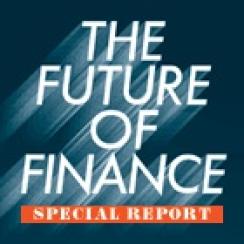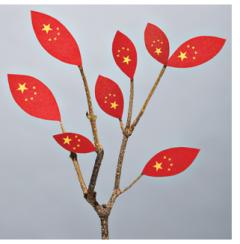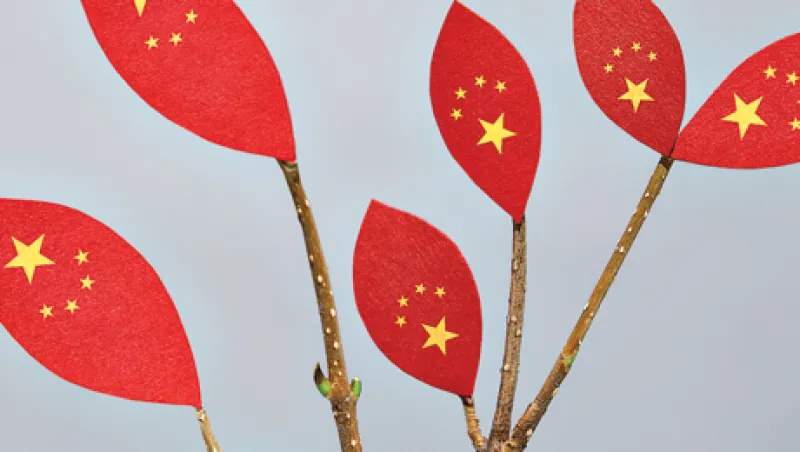
Realizing that Haitong would have to make a bold move to gain an offshore foothold, Lin in 2009 led the firm’s $345 million takeover of Taifook Securities Group, then Hong Kong’s biggest locally owned brokerage. It was the largest-ever foreign acquisition by a Chinese securities firm and made Haitong the first Chinese institution to have a full-scale offshore trading platform capable of underwriting bond and equity offerings, and providing M&A advice to clients.
“The best way to grow is through mergers and acquisitions,” Lin, now CEO of the firm’s Hong Kong–listed subsidiary, Haitong International Securities Group, tells Institutional Investor. “To build Taifook’s operations in Hong Kong would have taken us ten years.” As it is, growth with Taifook has been less than spectacular. Haitong ranked a modest No. 14 as an equity underwriter in Asia ex-Japan in the first half of this year, arranging seven initial public offerings worth a total of $509 million, according to data provider

China and its leading banks and brokerages are bound to play a bigger role in international finance in coming years, but as Haitong’s experience demonstrates, progress is likely to be much slower than the country’s economic clout suggests. China has the second-largest and fastest-growing economy in the world. It sits on an unprecedented $3.2 trillion of foreign currency reserves. Four of the top ten banks in the world by market capitalization are Chinese. But despite all those resources, China’s financial services giants have taken only the wariest of baby steps into the global marketplace. The Taifook deal was a rare foreign acquisition by a Chinese financial firm; most earn only a tiny fraction of their income overseas.
The caution of these institutions reflects the attitude of the Chinese government, which still owns majority stakes in the largest banks and brokerages. Sources say the Chinese Securities Regulatory Commission has made it clear to industry executives that it might reject sizable overseas acquisitions because of concern that they could entail systemic risk. Some early missteps have made Chinese officials leery of rapid foreign expansion. China International Corp., the country’s big sovereign wealth fund, made multibillion-dollar investments in Blackstone Group and Morgan Stanley in 2007, only to see the value of those stakes plunge when the financial crisis hit. Shenzhen-based Ping An Insurance (Group) Co. of China bought a 5 percent stake in Fortis in 2007 and had to take a $2.3 billion write-off after the crisis devastated the Belgian-Dutch banking and insurance group.
As a result, Beijing is moving to its own timetable and is determined to control the financial sector’s development to make sure it meets the country’s domestic requirements. China needs a more dynamic financial sector to help its economy shift from an export-oriented model to one driven more by domestic consumer demand, and Beijing has taken several steps recently to accelerate financial liberalization. But officials, mindful of the excesses that sparked the global crisis, remain wary of an unbridled financial sector and are being careful to move step-by-step — “crossing the river by touching the stones,” as former leader Deng Xiaoping put it.
“China doesn’t have the ability to replace the U.S. and claim global financial hegemony,” says Gary Liu, executive deputy director of the Lujiazui Institute of International Finance at the China Europe International Business School, which advises the Shanghai government on financial reforms. “China has too many domestic issues and challenges to overcome, including necessary political and administrative reforms, before it can even lay claim to having a globally competitive financial domestic marketplace.”
The same cautious approach extends to Beijing’s international financial policy and the management of its prodigious reserves. China is the biggest holder of U.S. Treasuries, with some $1.2 trillion, and should have a keen interest in diversifying its portfolio, but its leaders know they have a lot to lose if their actions destabilize markets. They also don’t want to see China’s economy whipsawed by a rapid rise in the renminbi, after watching a strong yen damage Japan over the past two decades.
So Beijing has moved creatively to increase the international use of the renminbi while maintaining strong control over the exchange rate. China has promoted the renminbi as a trade settlement currency in deals with mostly Asian trade partners and encouraged the rise of an offshore renminbi bond market in Hong Kong. Beijing is also eager to foster South-South capital flows with Brazil, Russia, India and South Africa, and has suggested that the so-called BRICS nations set up their own development bank to lend to emerging markets, in competition with the World Bank. At a China-Africa summit meeting in Beijing in July, Chinese officials offered some $20 billion worth of soft loans for various infrastructure projects in Africa over the coming three years, double the amount extended at the previous summit, in 2009.
China’s long-term ambition is to promote a sort of Beijing Consensus: a multipolar world in which new political and financial powers, including the Chinese, help set the rules, says Laurence Brahm, an American lawyer and entrepreneur based in Beijing who advises China’s State Council on international affairs. Unlike the so-called Washington Consensus, the U.S.-driven agenda that offered developing nations support from the World Bank and International Monetary Fund in return for market-oriented policy reforms, China’s model provides loans to and massive infrastructure investments in emerging markets in exchange for resource extraction rights.
“In the past the U.S. ruled the world through the Washington Consensus, where all major global decisions, political and financial, were either made in Washington or had to have tacit approval in Washington,” says Brahm. “Those days are over.”
DESPITE ITS DRAMATIC SUCCESS OVER THE PAST TWO decades, when growth averaged 10 percent a year, China’s investment-driven economic model is showing signs of strain. In the aftermath of the global financial crisis, the government and state banks pumped more than 12 trillion yuan into the system to sustain rapid growth. Much of the money went into investments in infrastructure and real estate, causing urban property prices to quadruple between 2009 and 2011. Investment now accounts for 48 percent of China’s economic output, while domestic consumption, the main driver of advanced economies, has fallen to just 40 percent.
“The Beijing Consensus simply doesn’t exist if we cannot build an economically sustainable growth model,” says Liu Mingle, an independent analyst and former executive of the People’s Daily group, the flagship publisher of the Communist Party.
With growth slowing amid global economic uncertainty, China must accelerate financial market reforms so that more credit goes to private sector investments than to white-elephant public sector projects, says Guan Anping, a Beijing-based securities lawyer and a former aide to Wu Yi, who was vice premier from 2003 to 2008.
“China needs a financially competitive landscape and sustainable capital market system before it can even think about challenging the U.S. in global finance,” says Guan.
The government has announced nearly a dozen liberalization moves since December, shortly after Premier Wen Jiabao appointed Guo Shuqing, a reformer and a longtime chairman of China Construction Bank, to head the CSRC. These measures include:
• Authorizing private lenders to operate in Wenzhou, a coastal city known for its entrepreneurial culture and informal lending networks. Before this experiment only government-approved banks could legally make loans, most of which have gone to big state-owned enterprises rather than small and medium-size businesses.
• Allowing banks to raise deposit rates to 110 percent of the benchmark for one-year deposits and to lower lending rates to 70 percent of the one-year benchmark. This is a first step toward interest rate liberalization, which officials hope will lead banks to allocate capital to the areas of the economy that need it most.
• Creating a high-yield bond market to allow small, unlisted companies to raise funds through private placements.
• Doubling the permitted daily trading band for the renminbi–U.S. dollar exchange rate, to plus or minus 1 percent — the first time since 2007 that Beijing has increased currency flexibility.
• Expanding the quota for qualified foreign institutional investors, the main vehicle by which foreigners can buy Chinese stocks, from $30 billion to $80 billion.
Among the most important objectives of the reforms: reducing the dominant role of China’s big banks and fostering a wider distribution of credit to the private sector. So says Jing Ulrich, Hong Kong–based chairman of global markets for China at J.P. Morgan. Currently, banks supply 80 to 90 percent of the credit to the corporate sector, and the vast bulk of it goes to state-owned enterprises. Small and medium-size businesses generate about 65 percent of China’s economic output and provide 80 percent of the country’s jobs but have received only about one fifth of bank loans, says Ulrich.
The reforms should encourage an increase in capital markets activity and benefit financial services companies, particularly stockbrokers, fund managers and insurers, says Banny Lam, Hong Kong–based chief economist for CCB International Securities, the offshore investment banking arm of China Construction Bank.
If these reforms are successful, China should be able to sustain annual growth rates of about 8 percent between now and 2015, with that rate declining gradually to 5 percent between 2027 and 2030, according to Gerard Lyons, chief economist at Standard Chartered. Under this scenario China would become a $60 trillion-a-year economy by 2030, substantially bigger than the projected $40 trillion U.S. economy. The combined market cap of the Shanghai and Shenzhen stock exchanges could rocket from $3.3 trillion in 2011 to $79 trillion in 2030, or 25 percent of the global market cap, Standard Chartered projects. The U.S., meanwhile, is likely to have a market cap of $45 trillion, up from $18 trillion in 2011.
If the reforms fail — and there are vested interests eager to see that they do — China’s growth rate could decelerate to an average of just 2.9 percent between now and 2030, Lyons says.
How quickly will Chinese financial firms take advantage of the new liberalizations? It’s too early to tell. So far, firms have made few waves in global finance except to do things that serve China Inc., such as Industrial and Commercial Bank of China’s 2008 purchase of a 20 percent stake in Standard Bank of South Africa. That $5.5 billion deal was intended to facilitate Chinese investment in developing Africa’s natural resources. By contrast, Japan went on a global buying spree when it had the world’s most valuable banks a generation ago.
But the combination of Chinese money and a retrenchment by many Western banks increases the potential for more overseas deals. In July, Beijing-based Citic Securities International Co., the Hong Kong arm of China’s largest brokerage by market cap, agreed to pay $310 million for 19.9 percent of CLSA, a Hong Kong–based securities firm controlled by France’s Crédit Agricole. This included an irrevocable option to buy the rest of CLSA for $942 million.
“The sky is the limit for the balance-sheet proposition of Chinese investment banks,” says Paul Schulte, Hong Kong–based investment strategist at BNY Mellon Asset Management. “The current leverage of debt to assets at most Chinese institutions is two times. So these guys can take on a huge increase in leverage — up to ten times is safe.”
CRITICAL TO CHINA'S FUTURE, AND TO WHETHER THE country will ever achieve financial superpower status, is the success of its renminbi internationalization experiment.
In the past two years, China has signed renminbi trade settlement agreements with more than a dozen countries, mostly in Asia and Africa. In 2011, China settled some 10 percent of its total trade, or 2.6 trillion yuan worth, in its own currency. That share could expand to 20 percent, or 6.5 trillion yuan, by 2015, says Karen Fawcett, group head of transactional banking at Standard Chartered’s wholesale banking division. Some analysts predict that China will be settling the vast majority of its trade in yuan by 2030. If so, the renminbi would by definition be a major global reserve currency, perhaps rivaling the dollar.
Hong Kong has been the chief beneficiary of renminbi internationalization. Investors in the city are allowed to convert up to 20,000 yuan a day from foreign currencies and move as much as 80,000 yuan a day between their Hong Kong accounts and accounts on the mainland without official approval. In the first seven months of 2012, companies and sovereign entities issued a total of 196 billion yuan worth of dim sum bonds, more than the 189 billion yuan raised in all of 2011.
Other financial centers are also looking to get a piece of the action. In April, HSBC Holdings issued 1 billion yuan of three-year notes in London, the first such offering outside Hong Kong. Authorities in Singapore plan to launch renminbi-denominated IPOs and secondary stock offerings later this year, while Japan introduced direct renminbi-yen currency trading in June. “The renminbi’s prominence as a currency for global trading and investment has risen dramatically since the Chinese government stepped up its internationalization campaign,” says J.P. Morgan’s Ulrich.
The authorities have set the goal of nearly full renminbi convertibility by 2020. This would permit widespread international use of the currency but leave in place control mechanisms to allow the authorities to combat any disruptive capital flows, notes Hu Yifan, head of research for Haitong International Securities in Hong Kong.
Still, Chinese officials may get cold feet about convertibility. Consider Shanghai’s vaunted international board. In 2010 officials in Shanghai announced their intention to launch an international board at the stock exchange to allow global companies to raise capital in China. Two years later, however, the board has yet to see the light of day. Sources say it won’t be launched this year and possibly not even in 2013. “New leaders are about to take the reins, and the bureaucracy doesn’t want to make any major moves during this transition period, domestically or internationally,” says JP Huang, a senior adviser to the leadership and chairman and chief strategic officer of JPI Group of Cos., a Beijing-based private equity firm that works closely with the government on many projects. Vice President Xi Jinping is set to take over from President Hu Jintao as head of the Communist Party in October and as president in March 2013.
Still, most analysts regard Xi, a “princeling,” or son of a revolutionary leader, as an advocate for economic and financial reforms. Xi was party secretary of the commercially prosperous Zhejiang province and Shanghai before his promotion to vice president in 2007.
The new leadership will push for accelerated investments globally that will take more of a private equity approach, says Huang.
Ryan He, executive director of Zhong Cai Investment, the private equity arm of China’s Ministry of Finance, says Vice Premier Li Keqiang, who likely will replace Wen as premier, also is an advocate of the government working with Chinese private sector players in global investments and M&A.
Zhong Cai Investment, which currently manages a 10 billion yuan private equity seeding fund, likely will be expanded dramatically in the coming year or two as part of the government’s efforts to bolster Chinese private equity firms, says He.
A sign of times to come is Shanghai-based private investment conglomerate Fosun International, which recently got a HK$30 billion credit line from China Development Bank for global and domestic expansion and acquisitions. The credit line is the single largest loan a state-run bank has ever given to a Chinese private enterprise.
The irony is that giving more power to private enterprises will over time lead to a decline in the dominance of the Chinese state-run financial conglomerates, says Huang Haizhou, chief strategist and head of research at China International Capital Corp., a Beijing-based joint venture investment bank.
China’s state-run conglomerates, especially the top five banks, must expand globally in the coming decades to maintain revenue growth as financial reforms erode their market shares, says Barclays Capital financial sector analyst May Yan. “If they don’t grow capacity and capability and grow globally, they will lose clients to global rivals,” she says. • •






